Most Beautiful Places in Japan to Discover
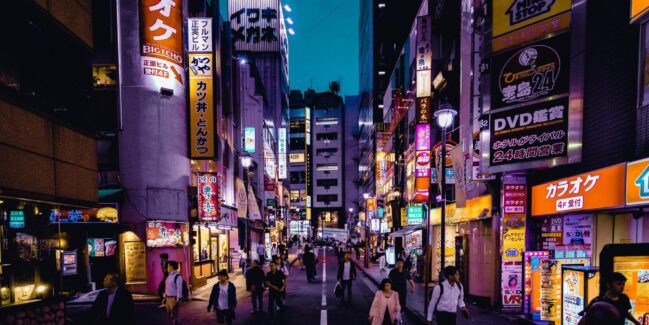
“Land of the Rising Sun” — this is the most common name for Japan. This unique country is a home to Hayao Miyazaki cartoons, illuminating cherry blossom festivals, majestic traditional temples and best party beaches. It is a rare place where rich history, authentic geisha culture and natural zen philosophy come from.
The main difference between Japan and other countries is the organic fusion of high- tech solutions, ancient architecture and traditions. The tourist season in Japan is year-round, but the best time is from March to May. It’s neither hot nor cold. The weather usually doesn’t throw up any surprises, and the gardens are in bloom.
Getting to Japan is easy for a tourist. International flights arrive at Tokyo, Osaka, Naha and Fukuoka airports. Those who are not seasick can also travel to Japan by sea. In order not to get lost in the midst of complicated flights visitors can subscribe to eSIM and get a virtual number for easy use. Now let’s discover the original Japanese culture and 15 most beautiful places in Japan everyone should visit.
Top-15 of the Most Beautiful Places to Visit in Japan
1. Tokyo, the Country’s Capital
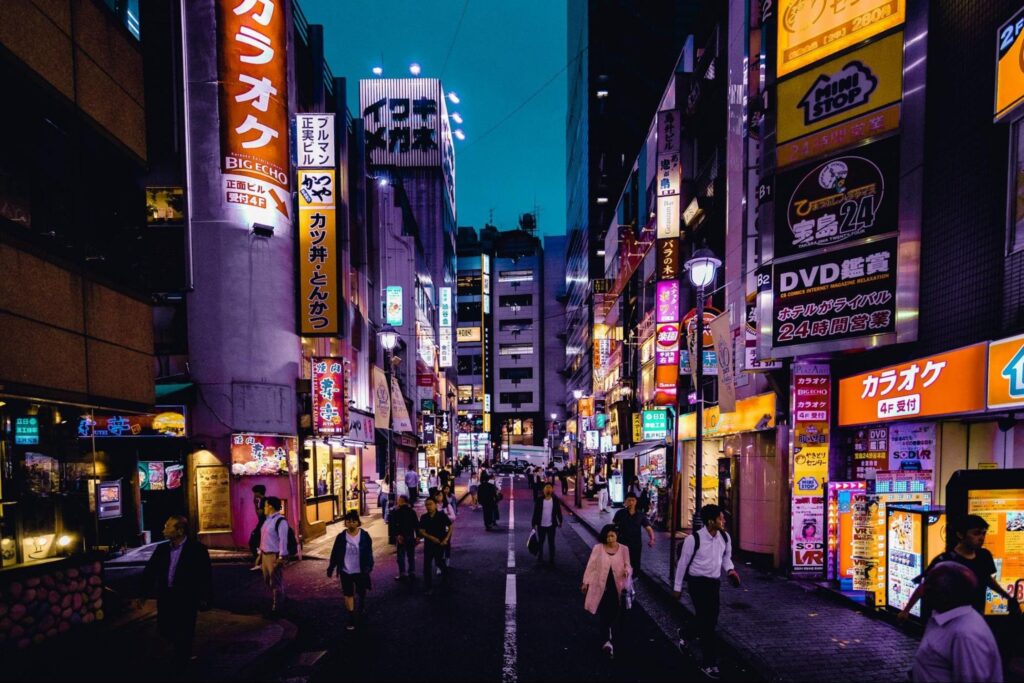
Tokyo — the world’s capital of tech innovations. It is renowned for its stunning skyline, world-class shopping districts, and a mix of history heritage and contemporary culture.
One of Tokyo’s most iconic landmarks is a major commercial and business center, Shibuya Crossing. The area around the crossing is packed with shops, restaurants, and cafes, offering everything from high-end fashion to quirky boutiques and a variety of culinary delights. Near the Shibuya area is Harajuku Quarter, one of the most unusual places in Tokyo. On Sundays, cosplayers, young people in bizarre costumes in the best anime tradition, gather here. Photos with amusingly dressed Japanese teenagers are taken here.
Read also:
2. Mysteries Magic of Mount Fuji

Mount Fuji, known as “Fuji-san” in Japanese, is one of Japan’s most iconic symbols and a must-visit destination for travelers. It is now the highest mountain in Japan, standing at 3,776 meters and is located about 100 kilometers southwest of Tokyo.
The top of a mounting is covered with snow. Every year about three hundred thousand people, including beginners, climb it. You don’t have to be a mountaineer to make such a climb. There are tours for people with different levels of training.
Mount Fuji is renowned for its almost perfectly symmetrical cone shape, which has inspired Japanese artists, poets, and travelers for centuries. The mountain is stunning when viewed across Lake Kawaguchi or from the nearby Chureito Pagoda. It is one of the Fuji Five Lakes and a popular destination for its stunning views.
3. Beauty and Magnificence of Ogasawara Islands
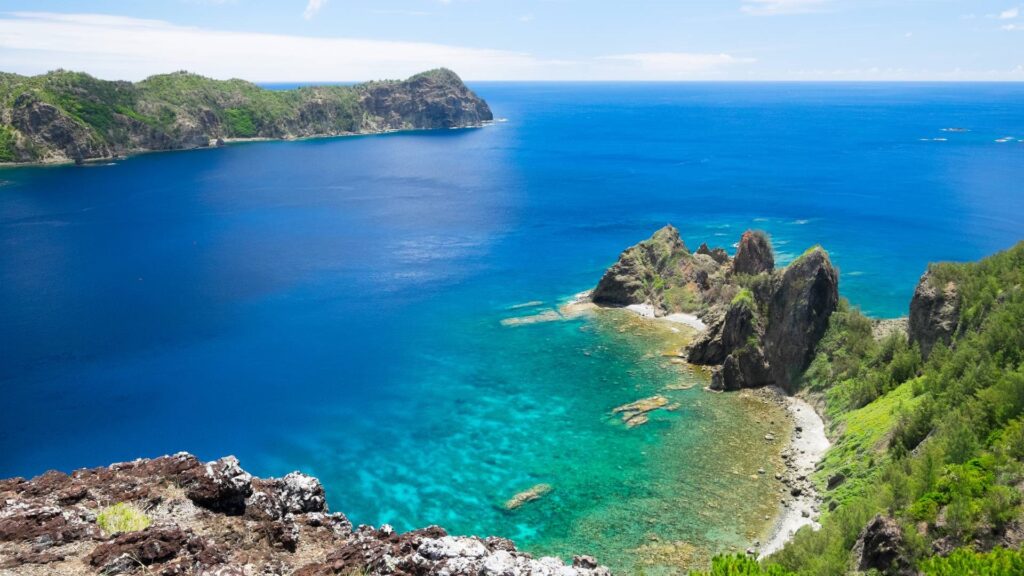
The Ogasawara Islands, also known as the Bonin Islands are one of the most beautiful places in Japan. The Ogasawara Archipelago is located a thousand kilometers south of Honshu. It consists of thirty islands with a total area of about 8,000 hectares. It is home to over four hundred endemic plant species and more than 190 endangered species of animals and birds, including the Bonin flying fox.
The crystal-clear waters offer some of the best diving experiences during your leisure time. The rich marine life includes colorful coral reefs and tropical fish, sea turtles, and occasional encounters with dolphins and whales.
4. Kyoto and the Zen of Arashiyama Bamboo Forest
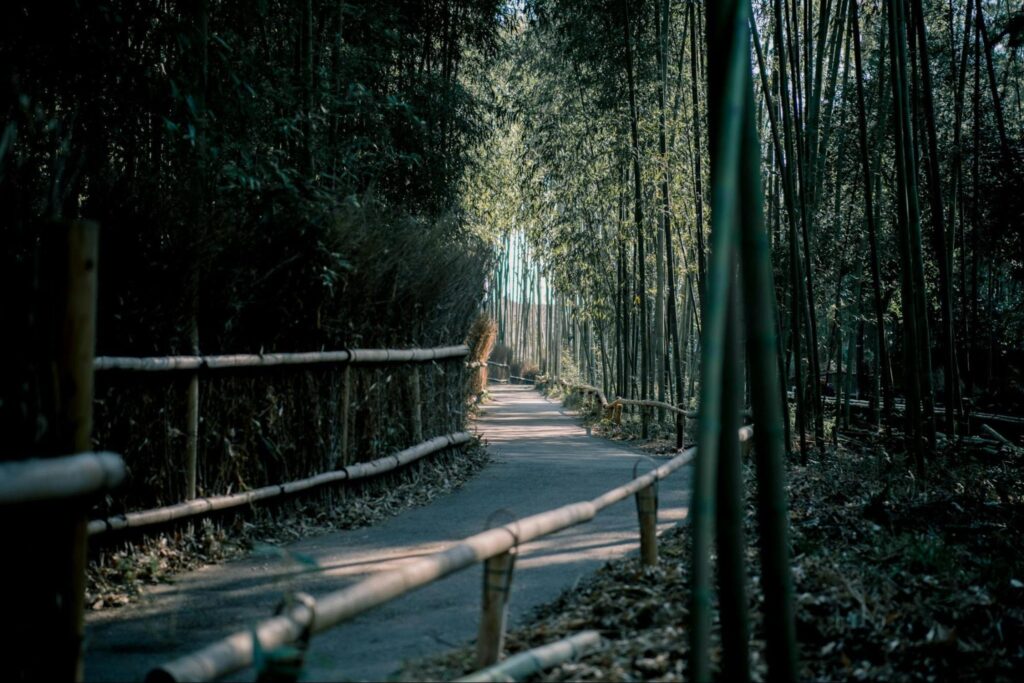
Kyoto, once the imperial capital of Japan, is a city renowned for its ancient temple and shrine with its stunning local design. Kyoto is the national center for traditional practices such as shudo (tea ceremony) and ikebana (flower arranging), the birthplace of kabuki and a leading center for calligraphy, painting and sculpture.
Must-have for a tourist is visiting Kiyomizudera, one of the most popular Buddhist temples in Japan. It stands on Mount Otowa, where the spirit of the goddess Kannon is said to dwell. To relax after a long walk, visitors can take a boat through the river near Arashiyama Bamboo grove to admire the beauty of rice fields and bamboo thickets.
5. Tottori Sand Dunes, Japan’s Local Treasure
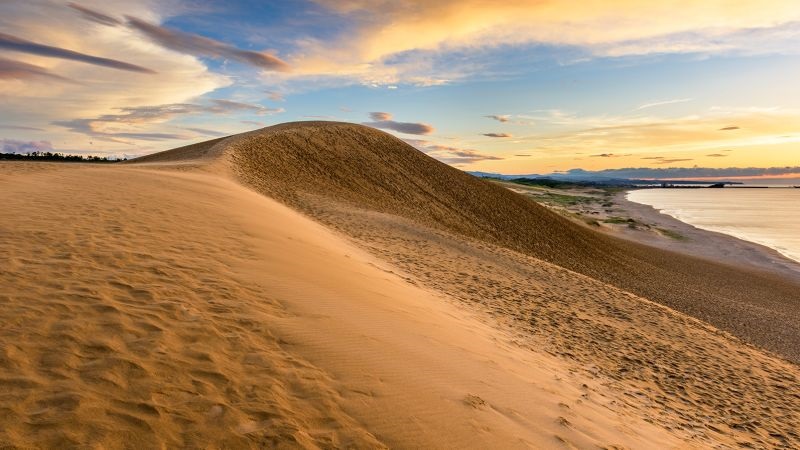
One of the best places in Japan is Tottori Sand Dunes, a coastal prefecture in Japan. It is an impressive sand formation, known for its blend of natural beauty and outdoor activities. This region provides a desert-like landscape that’s perfect for sandboarding, camel rides, and stunning photography.
Beyond the dunes, Tottori boasts scenic spots like the rugged Uradome Coast, ideal for exploring sea caves, and Mount Daisen, a popular hiking and skiing destination. The city of Tottori is rich in history, featuring hotels and attractions like the Kannon in the Temple and the Sand Museum, which showcases intricate sand sculptures.
The location is not that big, but it can be a challenge to get there on your own, so take special tours in groups. To stay connected all the time, you can subscribe to an eSIM data plan. This SIM is sure to keep you from getting lost in Japan’s locations.
Read also:
6. Dream Island Itsukushima and Torii Gate
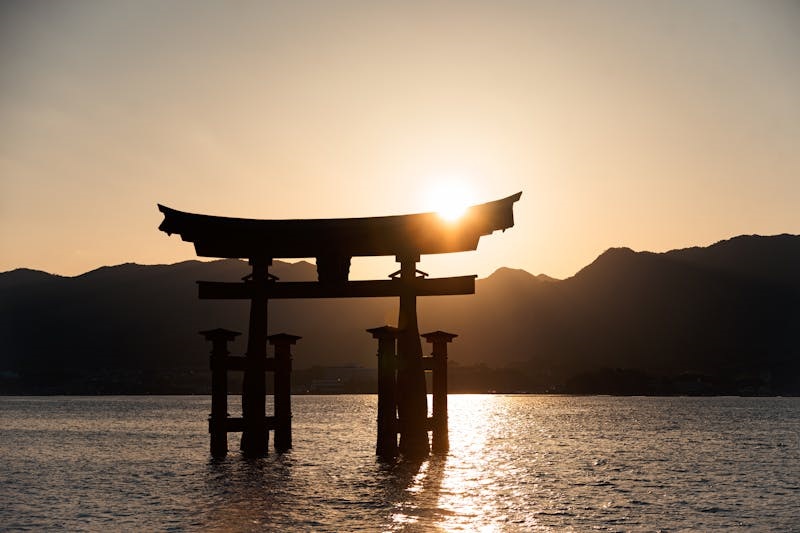
Itsukushima, known as Miyajima, is a small island in the coast of Hiroshima Bay. The real treasure of the island is its iconic Itsukushima Shrine and floating torii gate. The height of the torii gate reaches 16 meters. Therefore, they seem simply gigantic. The shrine appears to float on water during high tide, creating a stunning and ethereal sight that has become one of Japan’s most photographed landmarks. Now this complex is a UNESCO World Heritage Site.
The island is also home to the scenic Mount Misen, which offers hiking trails and panoramic views of the Seto Inland Sea with crystal clear waters. Miyajima is renowned for its friendly deer and provides a memorable experience for all tourists.
7. Nikko National Park, the Home of Waterfalls
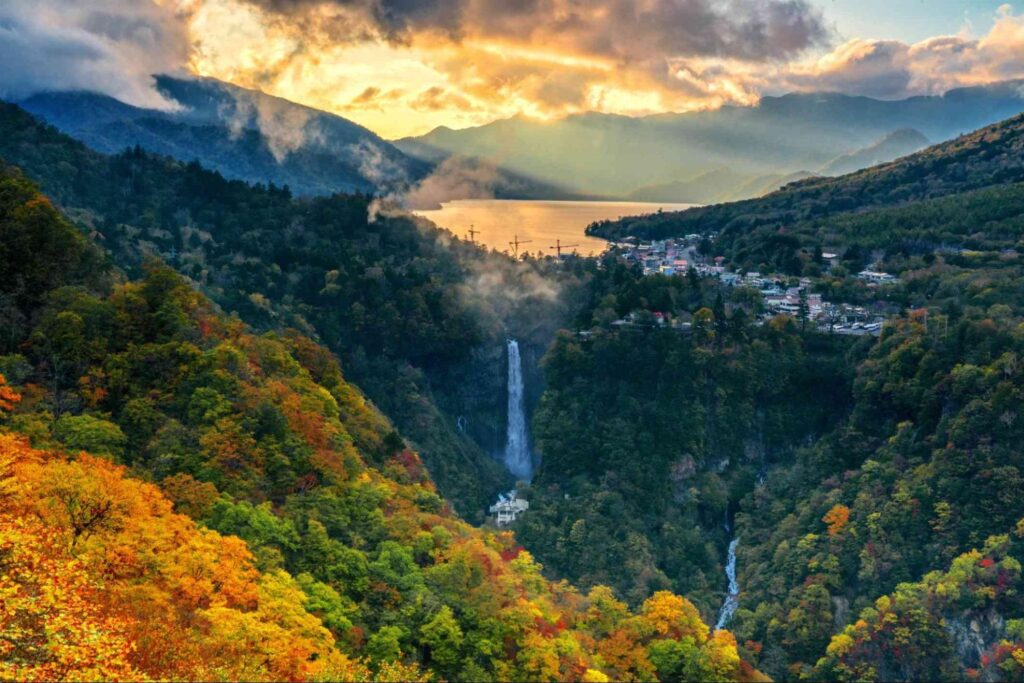
Nikko National Park is located in the Tochigi Prefecture of Japan, a two-hour drive from Tokyo. It is known for one of Japan’s most ornate shrines, Tosegu (UNESCO), and the mausoleum of Tokugawa Ieyasu, the founder of the Tokugawa military government who ruled the country for 250 years. The park remained a center of Shinto and Buddhist mountain religion for many centuries.
Among its objects are the high-mountainous Lake Chuzenji that is dotted with cypress forest, five beautiful waterfalls, mountain hiking trails and the area of therapeutic hot springs. In autumn, the Nikko National Park is one of the main places to admire Momiji Japanese maples, and in spring the cherry blossoms here. This is a destination where you as a tourist can admire mountain scenery, lakes, waterfalls, hot springs, and to look at live wild monkeys.
8. Japan Northern Province Hokkaido

Hokkaido is the second largest, northern and least developed of Japan’s four main islands. Hokkaido attracts visitors from all over the world with its unspoilt nature, excellent ski resorts, and hot springs. The low humidity makes the weather pleasant in summer, and in the cold season, during the winter sports can be enjoyed here. It is for these sensations that one should come here.
Hokkaido attractions include the port cities of Hakodate and Otaru with Onuma Park, Furano and Biei (two cities known for their picturesque countryside and ski resorts), famous ski resort Niseko and more than 5 national parks such as Daisetsuzan, Shikotsu-Toy and Akan-Kushiro, covered by cherry blossom in spring.
9. Toyama, the Spirit of a Medieval Japan
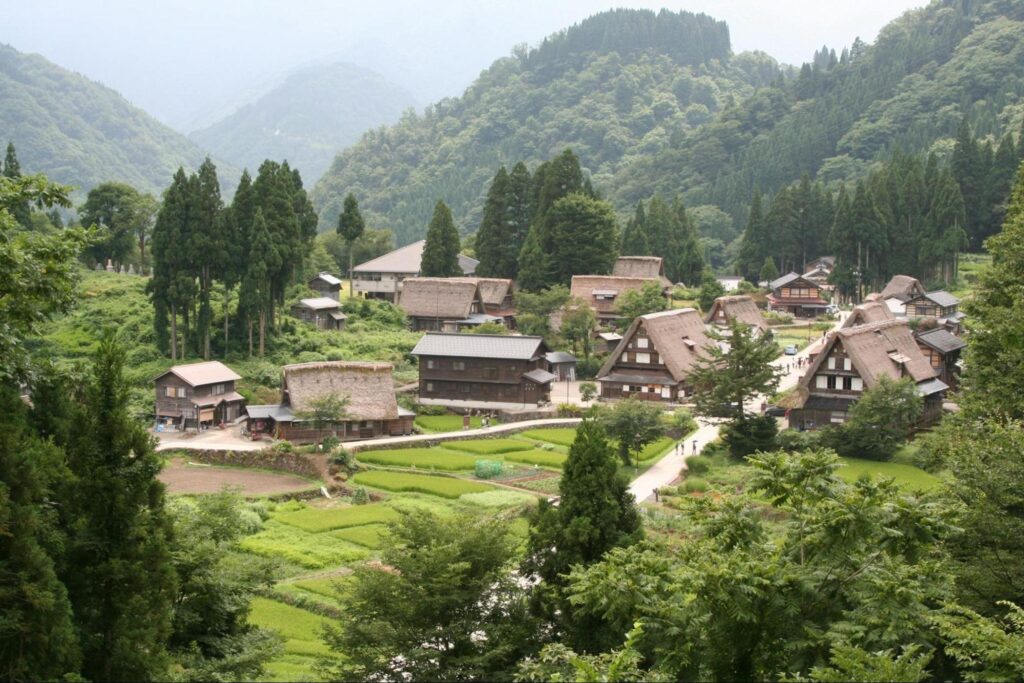
Toyama is located off the coast, 300 kilometers northwest of Tokyo. In this prefecture placed historic villages with beautifully preserved houses under steep gabled thatched roofs. Visitors are really transported back in time, to medieval Japan.
Not far from the village of Shirakawa is Ogimachi Castle. There is an observation deck that offers a magnificent panoramic view and its surroundings.
The characters of the word “Toyama” can be translated as “rich mountains“. This place is famous for its spectacular Tateyama Kurobe Alpine Route through the Northern Alps. Depending on the route, hikers may walk half or all of the way. Near the town, you may also visit the Folk Art Museum, and relax in the hot spring park.
10. Churaumi Aquarium, Japan’s Underwater World

The Okinawa Churaumi Aquarium, located within the Ocean Expo Park in Okinawa, Japan, is one of the largest oceanariums in the world. It offers visitors a mesmerizing journey through the diverse marine life of the Okinawan waters and beyond.
The centerpiece of the aquarium is the Kuroshio Sea tank, which holds 7,500 cubic meters of water and features a massive acrylic panel, providing an unobstructed view of majestic whale sharks, manta rays, and a variety of other sea creatures. The aquarium also houses several other exhibits, including the Deep Sea exhibit, showcasing the mysterious and rarely seen inhabitants of the deep ocean, and the Coral Sea, which highlights the vibrant and colorful coral reefs native to the region.
Read also:
11. Ashikaga Park, the Beauty of Fuji Flowers Show
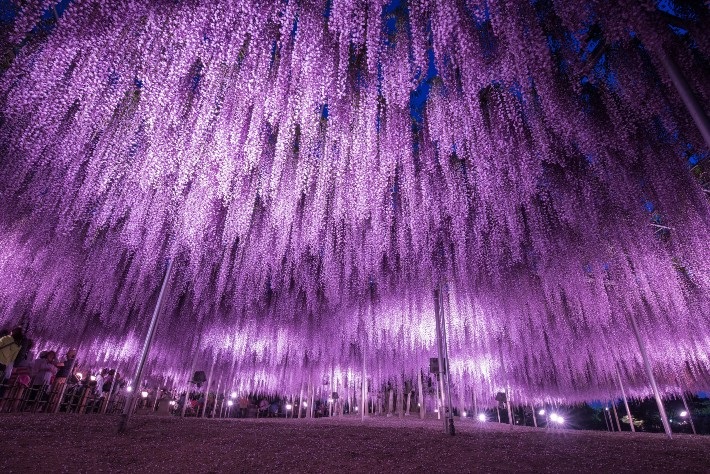
Ashikaga Flower Park is one of the most beautiful places in Japan worth visiting. This area is a renowned botanical garden celebrated for its breathtaking floral displays, particularly its stunning wisteria or fuji flowers.
Spanning over 23 acres, the park is a floral paradise. Many visitors from all over the world come to see the year— round blooms and the Great Wisteria. It is a massive tree over 150 and more years old, with cascading purple flowers that create a magical canopy. Also, the park showcases a variety of flowers such as roses, tulips, and hydrangeas, each season bringing a new wave of color and fragrance.
During the peak wisteria season in April or May, the park is illuminated at night. While strolling through the illumination tourists will be impressed by fairy— tale ambiance and tunnels of colorful star lights.
12. Himeji Castle, an Architectural Masterpiece
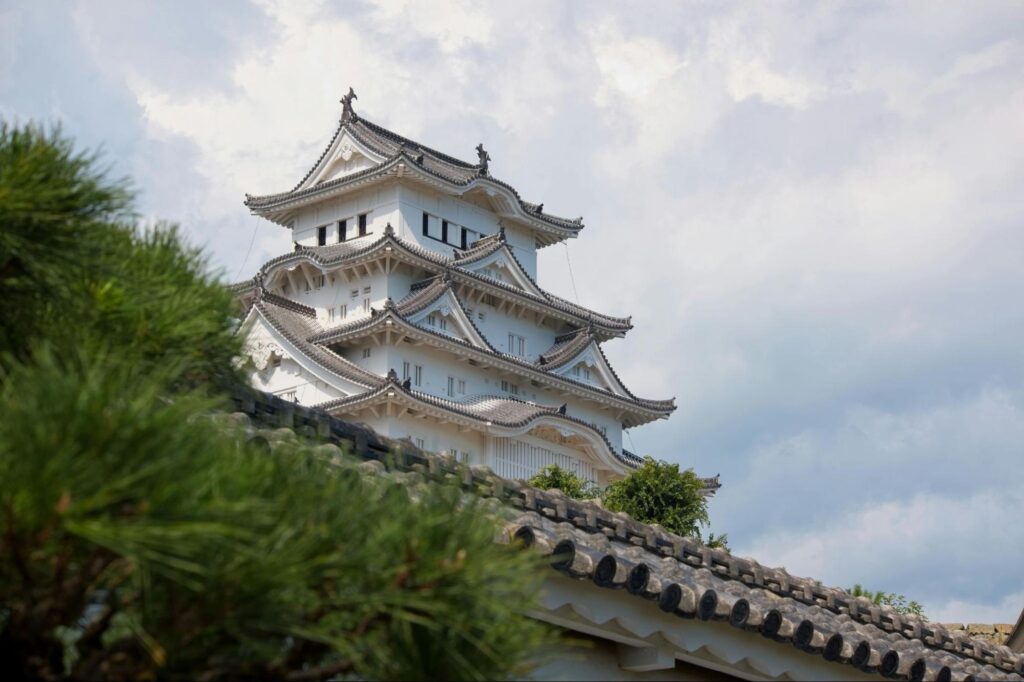
Himeji Castle, also known as “White Heron Castle” due to its brilliant white exterior and elegant, bird-like appearance, is one of Japan’s most significant castles. Unlike most other castles damaged during World War II and various natural disasters, Himeji has been beautifully preserved. Seventy-four structures on the castle grounds, including the tower and gate, are recognised as cultural UNESCO World Heritage Site status. The thick layer of white plaster, a hallmark of the castle, not only adds to its splendor, but is also designed to protect it from fire and bullets.
In spring, Himeji Castle is surrounded by cherry blossoms and a flower garden. There are more than a thousand sakura trees in and around Himeji Castle. It is one of the best places in Japan for “hanami”— the national tradition of flower viewing.
13. Hitachi Seaside Park, Blue Garden Inspiration
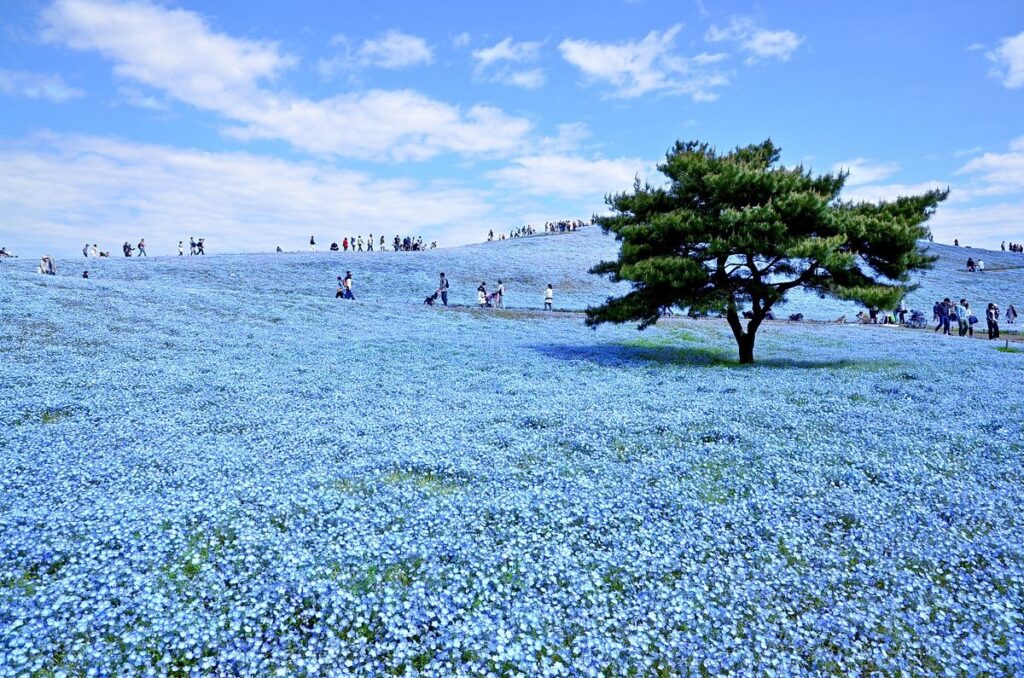
Hitachi Seaside Park, located in Hitachinaka, Ibaraki Prefecture, is a sprawling public park renowned for its stunning and diverse floral displays that change with the seasons. Covering an area of about 350 hectares, the park is the inspiration for nature lovers and photographers, offering breathtaking landscapes.
One of the most beautiful places in Hitachi Seaside Park is the Miharashi Hill. This hill is famous for its vast fields of nemophila flowers that bloom in spring. During this period, the hill is blanketed in millions of delicate blue flowers, creating a surreal and mesmerizing sea of blue. At the end of autumn, the same hill transforms into a fiery red expanse when the kochia bushes turn vivid shades of crimson. This location offers a spectacular contrast to the blue Pacific Ocean in the background.
14. Adachi Museum of Art, Mix of Traditions and Modernity

The Adachi Museum of Art is home to its exquisite Japanese gardens and impressive collection of modern art. Founded in 1980 by businessman and art collector Zenko Adachi, the museum aims to blend art and nature harmoniously.
It features six designed gardens along the museum that are considered some of the most beautiful in Japan. The Dry Landscape Garden, Moss Garden, and White Gravel and Pine Garden with ponds is a mix of modernism and traditions. Inside the museum houses a significant collection of stylish Japanese paintings, including works by Yokoyama Taikan, Uemura Shoen, and Takeuchi Seiho as one of traditionalism representatives.
15. Oyama Rice Terrace in Kamogawa, Picturesque Landscapes
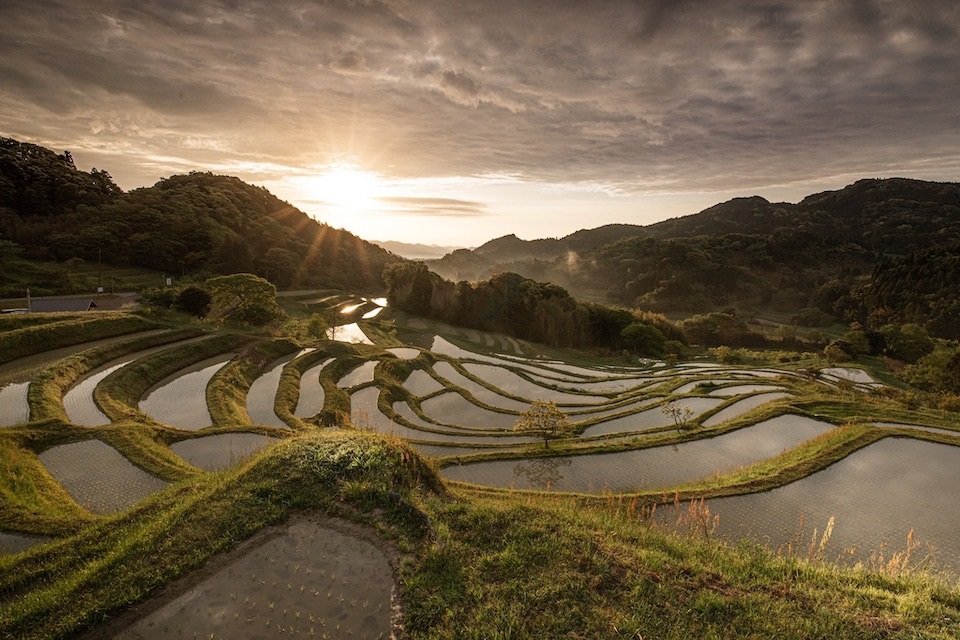
The Oyama Rice Terrace, located in Kamogawa, Chiba Prefecture, is one of the most beautiful places in Japan. Once a year, many volunteers come here to plant rice. In autumn, local farmers harvest the crop with traditional tools. Whatever time of year you visit, allow plenty of time to see the hill from different angles, walk down to the ocean and stroll along the narrow paths winding through the rice fields.
The terraced fields named “tanada” have been carefully cultivated over centuries, reflecting the ingenuity and hard work of local farmers. Besides scenic beauty, the area hosts various events, including rice planting and harvesting festivals, where visitors can participate and learn about traditional farming techniques. In other words, it is one of the best places in the country for admiring nature.
Read also:
FAQ
What are the best cities in Japan that I should visit?
Tourists should visit Japan’s most beautiful cities or famous historical centers. Firstly, it is Tokyo, which blends modernity and tradition. Then, Kyoto (cultural capital) that is famed for its shrines and temples and Osaka, famous for its vibrant food scene and landmarks. And not to forget about Hiroshima that offers poignant history at the Peace Memorial Park. Each city provides Japan’s rich culture and natural beauty.
Are there any traditional Japanese villages worth visiting?
Japan has many villages worth visiting. One of the most beautiful places in Japan is Shirakawa-go and Gokayama. It is famous for their gassho-zukuri farmhouses with steep thatched roofs, designed to withstand heavy snowfall. Besides, the historic post towns of Tsumago and Magome in Nagano Prefecture have been fascinating preserved and provide a charming look at Edo-period architecture and culture.
What kind of weather should I expect?
Japan’s weather varies by region and season. In spring (March to May), expect mild, pleasant temperatures and cherry blossoms. Summer (June to August) is hot and humid, with a rainy season in June and early July. But Autumn (September to November) brings really comfortable weather. Winter (December to February) is cold, with heavy snow in northern regions like Hokkaido. Coastal cities like Tokyo and Osaka have milder winters with occasional snow.
How to travel from one city to another in Japan?
Traveling between cities in Japan is easy thanks to its transportation options. The shinkansen is the fastest transfer between cities. This way connects major cities like Tokyo, Kyoto, Osaka. Domestic flights are convenient for longer distances, with airports in Tokyo, Osaka, and Sapporo. Long-distance buses for small group tours offer an economical alternative, while car rentals are ideal for exploring rural regions. Local trains and subways are perfect for short distances and urban travel.
Plan Your Visit to Japan with eSIM Plus and Virtual Phone Numbers
Organizing an unforgettable trip with your family or friends can be challenging. Tourists often encounter difficulties while planning a trip by themselves: troubles with booking, no travelers internet, not comfortable accommodation. It is very important to be connected to the external world. So, tourists can try either local SIM cards of the country or travel apps like travel eSIM.
eSIM Plus offers cheaper tariffs than the standard SIM mobile carriers, providing seamless connectivity with the help of virtual phone numbers. The key distinctive feature of virtual numbers is that users connect it in their home country and use it in any other location. You can choose as many local virtual numbers as you want.
With the variety of tourist eSIM data plans it is easy to communicate online, share photos and videos, and talk a lot on FaceTime. The features of eSIM are limitless and only expanding. So, don’t be afraid to travel, discover new experiences and share them with others. Japan is worth a visit for everyone!





